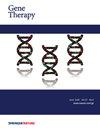onaseminogene abeparvovec基因替代疗法的心脏安全性综述:从临床前到临床结果的转化。
IF 4.6
3区 医学
Q1 BIOCHEMISTRY & MOLECULAR BIOLOGY
引用次数: 0
摘要
人类基因替代疗法,如onasemnogene abeparvovec(OA),使用重组腺相关病毒(rAAV)载体治疗单基因疾病。心脏和肝脏是已知的动物毒性靶器官;建议在OA给药后对人体进行心脏和肝脏监测。这份手稿提供了来自临床前研究和临床来源的心脏数据的全面描述,包括临床试验、管理访问计划和2022年5月23日静脉注射OA后的上市后环境。单剂量小鼠GLP毒理学研究揭示了剂量依赖性心脏发现,包括血栓、心肌炎症和变性/再生,这些与高剂量组的早期死亡率(4-7周)有关。在给药后6周或6个月,在非人类灵长类动物(NHP)中没有此类发现。在NHP或人类中未发现心电图或超声心动图异常。OA给药后,一些患者出现肌钙蛋白单独升高,没有相关体征/症状;报告的患者心脏不良事件被认为是次要病因(例如导致心脏事件的呼吸功能障碍或败血症)。临床数据表明,在小鼠身上观察到的心脏毒性不会转化为人类。心脏异常与SMA有关。医疗保健专业人员在评估OA给药后心脏事件的病因和评估时应使用医学判断,以便考虑所有可能性并相应地管理患者。本文章由计算机程序翻译,如有差异,请以英文原文为准。
Review of cardiac safety in onasemnogene abeparvovec gene replacement therapy: translation from preclinical to clinical findings
Human gene replacement therapies such as onasemnogene abeparvovec (OA) use recombinant adeno-associated virus (rAAV) vectors to treat monogenic disorders. The heart and liver are known target organs of toxicity in animals; with cardiac and hepatic monitoring recommended in humans after OA dosing. This manuscript provides a comprehensive description of cardiac data from preclinical studies and clinical sources including clinical trials, managed access programs and the post-marketing setting following intravenous OA administration through 23 May 2022. Single dose mouse GLP-Toxicology studies revealed dose-dependent cardiac findings including thrombi, myocardial inflammation and degeneration/regeneration, which were associated with early mortality (4-7 weeks) in the high dose groups. No such findings were documented in non-human primates (NHP) after 6 weeks or 6 months post-dose. No electrocardiogram or echocardiogram abnormalities were noted in NHP or humans. After OA dosing, some patients developed isolated elevations in troponin without associated signs/symptoms; the reported cardiac adverse events in patients were considered of secondary etiology (e.g. respiratory dysfunction or sepsis leading to cardiac events). Clinical data indicate cardiac toxicity observed in mice does not translate to humans. Cardiac abnormalities have been associated with SMA. Healthcare professionals should use medical judgment when evaluating the etiology and assessment of cardiac events post OA dosing so as to consider all possibilities and manage the patient accordingly.
求助全文
通过发布文献求助,成功后即可免费获取论文全文。
去求助
来源期刊

Gene Therapy
医学-生化与分子生物学
CiteScore
9.70
自引率
2.00%
发文量
67
审稿时长
4-8 weeks
期刊介绍:
Gene Therapy covers both the research and clinical applications of novel therapeutic techniques based on a genetic component. Over the last few decades, significant advances in technologies ranging from identifying novel genetic targets that cause disease through to clinical studies, which show therapeutic benefit, have elevated this multidisciplinary field to the forefront of modern medicine.
 求助内容:
求助内容: 应助结果提醒方式:
应助结果提醒方式:


